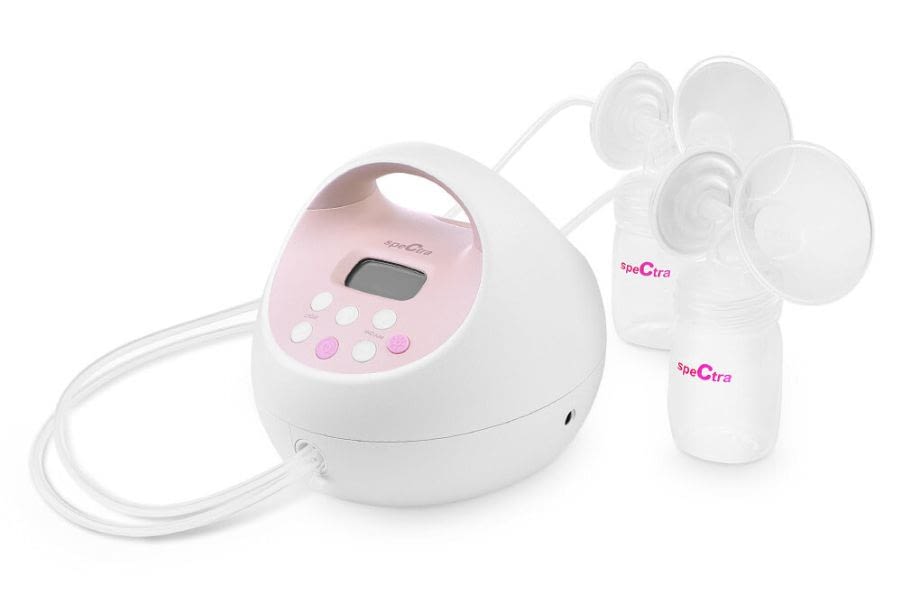Being a nursing mother comes with its own set of challenges, and one of them is navigating nighttime feedings. Many new moms wonder how often they should pump at night to maintain their milk supply and meet their baby’s nutritional needs.
This comprehensive guide will explore the optimal pumping frequency during nighttime hours and provide valuable tips for breastfeeding mothers. So, let’s delve into How often should I pump at night and the best practices for pumping at night.
Understand the Importance of Nighttime Pumping: How often should I pump at night?
Pumping at night serves multiple purposes for nursing mothers. Firstly, it helps maintain a healthy milk supply by signaling to your body that the demand for breast milk remains constant, even during nighttime hours.
Secondly, it allows you to store additional breast milk for future use, which can be especially helpful if you plan to return to work or be away from your baby for an extended period.
The Best time to pump at night
Many breastfeeding moms like me find their breasts more full at night, making it easier to pump efficiently. Also, you will usually have fewer distractions during nighttime, allowing you to focus solely on expressing your breast milk.
To maximize results, try using a double electric breast pump and consider pumping for a more extended period than during the day.
Read Also: How to use Lansinoh breast pump?
Factors Influencing Nighttime Pumping Frequency
The frequency of nighttime pumping sessions can vary depending on individual circumstances. Some factors to consider are your baby’s age, growth patterns, and overall nursing routine. In the early weeks, newborns may need more frequent nighttime feedings, so you may need to pump more often to maintain an adequate milk supply.
Establish a Nighttime Pumping Routine
Creating a consistent nighttime pumping routine can benefit both you and your baby. Begin by finding a comfortable and quiet relaxing space during your pumping sessions. Set a regular time for pumping, ideally aligning it with your baby’s nighttime feeding schedule. This helps synchronize your milk production with your baby’s needs and establishes a predictable routine.
Listening to Your Body’s Cues
As a nursing mother, I pay attention to my body’s signals. If I feel engorged or uncomfortable during the night, it may indicate that I need to pump to alleviate discomfort and maintain my milk supply. However, every woman’s body is unique, so it’s crucial to tune in and respond accordingly to your body’s cues.
Balancing Sleep and Milk Supply
Achieving a balance between sufficient sleep and maintaining a healthy milk supply can be challenging for nursing mothers. While it’s important to prioritize rest, ensuring your baby has enough breast milk is equally crucial. Experiment with pumping frequency during nighttime hours to find a balance that works for you. Aim to compromise between meeting your baby’s needs and getting adequate sleep to support your well-being.

Tips for Breast Pumping at Night
When it comes to nighttime pumping, efficiency is critical. Here are a few tips to help you make the most of your pumping sessions:
- Use an electric breast pump: This pump allows you to express milk from both breasts simultaneously, reducing pumping time.
- Massage your breasts before pumping: Gentle massaging can help stimulate milk flow and make your pumping sessions more productive.
- Stay relaxed: Find ways to relax during your nighttime pumping sessions. Consider listening to soothing music or practicing deep breathing techniques to create a calm environment.
- Be Organized: Have all the necessary supplies ready before you begin pumping at night, such as extra bottles, breast pads, lanolin cream, and clean pump parts.
- Get Comfortable: Put on a cozy robe or comfortable clothing before starting to pump; this will help relax your muscles and make the process more comfortable.
- Choose your Location: Pick a location that is relaxing and free from distractions so you can concentrate on pumping without interruption.
- Hydrate: Stay hydrated during the night to ensure adequate milk production; this will also help keep you energized for the rest of your night’s sleep.
- Clean Pump Parts: It is important to clean your pump parts after each use to avoid contamination and keep your milk safe.
- Try Different Positions: Experiment with different pumping positions throughout the night; this may help you find the most comfortable place for your body.
Nighttime pumping and breastfeeding
If you are concerned about maintaining an adequate milk supply or increasing your production, pumping at night can be helpful. Nighttime pumping can stimulate additional milk production and signal your body to continue producing milk.
So, Do I need to pump at night if I’m breastfeeding, and what happens If I accidentally went 6 hours without breastfeeding?
If your breasts feel uncomfortably full or engorged during the night, pumping can provide relief. Removing some milk can help alleviate discomfort and prevent issues such as mastitis or blocked ducts.
Also, Suppose your baby typically stretches longer without feeding at night, and you feel uncomfortably full. In that case, pumping can help you manage your milk supply and maintain a regular feeding routine.
Related: How to Combine Breastfeeding and Pumping
Nighttime Pumping Strategies for Working Moms
Planning and organizing your pumping sessions can be incredibly beneficial if you’re a working mom who needs to pump at night to build up a supply for the next day. Consider using a hands-free pumping bra, which allows you to multitask while expressing milk. Invest in a high-quality breast pump that suits your needs and enables efficient pumping.
Maximizing Comfort and Efficiency
To make your nighttime pumping sessions more comfortable and efficient, pay attention to the following:
- Use breast shields that fit correctly: Properly fitted breast shields can prevent discomfort and ensure effective milk extraction.
- Apply a warm compress: Before pumping, apply a warm compress to your breasts to promote milk flow and increase comfort.
Introducing a Dream Feed to Minimize Nighttime Pumping
A dream feed refers to a late-night feeding given to your baby while still asleep. This strategy can help minimize the need for nighttime pumping as your baby receives additional nourishment without fully waking up. By incorporating a dream feed, you can extend the time between pumping sessions and ensure your baby’s nutritional needs are met.
Can I Pump Into the Same Bottle Within 4 Hours?
As a nursing mother, you may wonder if it is safe and convenient to pump breast milk into the same bottle within 4 hours. It depends on various factors, but it is generally safe to combine breast milk pumped within a 4-hour timeframe into the same bottle under certain conditions.
Parents must prioritize their baby’s health and safety when handling breast milk. The following guidelines can help you make an informed decision:
- Proper Storage: If you combine breast milk within 4 hours, ensure each expression is stored properly at the correct temperature. Freshly pumped breast milk should be stored in a clean, sterilized container with a secure lid. Label the container with the date and time of expression to track its freshness.
- Hygienic Practices: Maintain good hygiene by washing your hands thoroughly before handling breast milk. Ensure all pumping equipment, including breast shields and bottles, are clean and sanitized. This reduces the risk of contamination and ensures the milk remains safe for your baby.
- Temperature Control: Breast milk can spoil if not stored appropriately. Freshly expressed milk can be safely stored at room temperature (between 59°F and 77°F or 15°C and 25°C) for up to 4 hours. However, if the room is warm or the milk has been exposed to direct sunlight, it is safer to refrigerate or freeze it immediately.
- Observation and Smell: Before combining breast milk from different pumping sessions, check for any signs of spoilage. Fresh breast milk typically has a slightly sweet or mild odor. If the milk smells off or sour, discard it to prevent potential harm to your baby.
- Transparent Containers: Using transparent containers or bottles can help you easily monitor the freshness and quality of breast milk. This allows you to identify any changes in color, consistency, or separation which might indicate spoilage.
- Comfortable Storage: If you plan to combine multiple pumping sessions into the same bottle, ensure that the bottle has enough capacity to accommodate the amount of milk you expect to collect within the 4-hour. Avoid overfilling the bottle, as it may lead to spills or leakage.
Breast milk should not be mixed with previously stored milk that has been refrigerated or frozen. Combining fresh milk with refrigerated or frozen milk can increase the risk of bacterial growth and compromise the overall quality of the milk.

Can I Go 8 Hours Without Pumping at Night, OR do I have to pump at night?
The length of time you can go without pumping at night depends on these factors, including
- your milk supply
- your baby’s feeding patterns
- and your comfort levels.
While it is generally recommended to pump or breastfeed frequently to maintain milk supply, some nursing mothers may be able to go up to 8 hours without pumping at night without experiencing significant issues. However, it is essential to consider the following aspects:
Milk Supply
If you have an abundant milk supply and your baby is nursing well during the day, you can go longer stretches at night without pumping. However, every mother’s milk production varies, and some may need to pump more frequently to ensure an adequate milk supply.
Read Also: Why Does My Breast Milk Look Watery?
Baby’s Age
Your baby’s age plays a crucial role in determining the length of time you can go without pumping. Newborns have smaller stomachs and need more frequent feedings, even at night. As your baby grows and their stomach capacity increases, they may be able to go longer between feedings, allowing you to pump less frequently at night.
Comfort and Engorgement
Do I have to pump at night? Going 8 hours without pumping at night may lead to discomfort or engorgement for some nursing mothers. Engorged breasts can cause pain and increase the risk of clogged ducts or mastitis. If you experience discomfort or find it challenging to sleep due to engorgement, it is advisable to pump or express milk to alleviate the pressure and maintain your milk supply.
Milk Storage
If you plan to go without pumping for an extended period at night, you may want to consider storing extra breast milk beforehand. Pumping during the day and keeping the expressed milk in proper storage containers can supply your baby’s nighttime feedings without immediate pumping.
So, can I sleep through the night without pumping, and how often should I pump if I’m breastfeeding?
It is best to pump or breastfeed every 2-3 hours at night to maintain milk supply and meet the baby’s nutritional needs. If a mother cannot pump that frequently, she can try hand expression or use a supplemental nursing system to ensure her baby gets enough milk.
The transition from pumping to breastfeeding: How to Stop Pumping at Night?
If you have been pumping at night and want to transition away from nighttime pumping sessions, there are several steps you can take to reduce and eventually stop pumping during those hours gradually. Here are some strategies to help you in the process:
Assess Your Milk Supply
Before you begin the process of stopping nighttime pumping, assess your milk supply and make sure it is well-established. Ensure your baby consistently gets enough milk during the day through breastfeeding or pumping sessions.
Slowly Decrease Pumping Sessions
Start by gradually decreasing the frequency of nighttime pumping sessions. For example, if you have been pumping three times a night, reduce it to two times for a few days, then to one time, and so on. This gradual approach allows your body to adjust to the change while minimizing the risk of engorgement or discomfort.
Adjust Pumping Schedule
Instead of eliminating nighttime pumping sessions, consider shifting them to earlier evening hours or closer to your bedtime. This can help you maintain a balanced milk supply while gradually reducing the need to pump at night.
Nurse on Demand
Encourage your baby to nurse on demand during the evening and nighttime hours. This will help stimulate milk production and meet your baby’s needs without relying solely on pumping. Nursing sessions can also provide comfort and promote bonding between you and your baby.
Focus on Daytime Pumping
Increase the frequency and efficiency of your daytime pumping sessions to compensate for the reduced nighttime pumping. Maximizing your milk production during the day gradually minimizes the need for nighttime pumping while maintaining an adequate supply.
Gradually Increase Intervals
Once you have reduced nighttime pumping to a minimum or eliminated it, gradually increase the time between your last evening pumping session and the first-morning pumping session. This allows your body to adjust to longer stretches without pumping and helps prevent discomfort or engorgement.

Pumping at Work Hacks
Pumping at work can present unique challenges, but with some helpful hacks, you can make the experience smoother and more convenient. Here are some tips to make pumping at work easier:
- Inform your employer or supervisor beforehand about your intention to pump at work. Discuss your needs, such as break times and a private, comfortable space for pumping. Planning and establishing open communication ensure you have the necessary support and accommodations.
- Establish a consistent pumping schedule that aligns with your work breaks. Stick to this schedule as closely as possible, even if you don’t feel engorged.
- Create a designated pumping area at work. Ideally, this space should be private, clean, and equipped with a comfortable chair, a table for your pump and supplies, and an electrical outlet. You can also personalize the space with calming elements, such as photos of your baby or relaxing scents, to help create a soothing environment.
- A reliable and efficient breast pump can significantly impact your pumping experience. Choose a pump that suits your needs, whether manual, electric, or double-electric. Consider features like adjustable suction levels, a hands-free option, and convenient portability.
- Utilize hands-free pumping bras or pumping bras with built-in flanges. These bras allow you to pump without needing to hold the flanges, enabling you to multitask, work on your computer, or read a book while pumping.
- Create a pumping essentials kit to keep at work. This kit should include spare pump parts, breast milk storage bags or containers, extra nursing pads, cleaning wipes or spray for pump parts, and a cooler with ice packs for storing expressed milk until you can refrigerate it.
- Streamlining the set-up and clean-up process can save time. Pre-assemble your pump parts and store them in a clean, labeled container. After each pumping session, use quick-clean wipes or rinse your pump parts with water to remove milk residue. Wash the pump parts thoroughly and let them air dry.
- Choose clothing that allows easy access for pumping. Consider wearing nursing-friendly tops or dresses, button-up shirts, or loose-fitting tops that can be lifted or unbuttoned for efficient and discreet pumping sessions.
Remember, pumping at work is your right as a breastfeeding mother, and it can be a positive and empowering experience with the right tools and strategies. Adapt these hacks to your specific work environment and needs, and don’t hesitate to seek guidance from a lactation consultant or other experienced professionals for additional support.
The best time of day to power pump
The technique of power pumping involves a concentrated and intense pumping session to help boost the milk supply. While there isn’t a specific “best” time of day to power pump that applies to everyone, here are a few suggestions to consider:
Morning or early afternoon: Many breastfeeding individuals find their milk supply is typically higher in the morning or early afternoon. Taking advantage of this time when your milk production is naturally higher can benefit power pumping.
After nursing: Power pumping immediately after a breastfeeding session can help stimulate additional milk production. Your body will already be in “let-down” mode, making expressing milk with the pump easier. It can be beneficial if you want to increase your milk supply.
Evening or nighttime: Some individuals choose to power pump in the evening or at night when they have more free time and can relax without interruptions. It can be a good option if you find it challenging to fit power pumping into your daytime routine.
Remember, power pumping aims to mimic the frequent and intense feeding pattern of a baby going through a growth spurt, so consistency is vital. Regardless of the time of day you choose, it’s essential to stick to a regular power pumping schedule for a few days or weeks to see an impact on your milk supply potentially.
Conclusion
Pumping at night is crucial in maintaining milk supply and meeting your baby’s nutritional requirements. By establishing a consistent pumping routine, listening to your body’s cues, and implementing efficient strategies, you can find the right balance between providing breast milk and getting sufficient rest. Remember, every nursing journey is unique, so it’s essential to experiment and adjust your nighttime pumping routine to suit your needs.
Parents Also Ask
Do I have to pump every 3 hours at night?
No, you do not have to pump every 3 hours at night. The frequency of pumping depends on your individual needs and milk supply. Some mothers may pump at longer intervals during the night for better rest.
What time is prolactin highest?
Prolactin levels are typically highest during the early hours of sleep, specifically between midnight and early morning, around 2-4 am
1 Visit today





